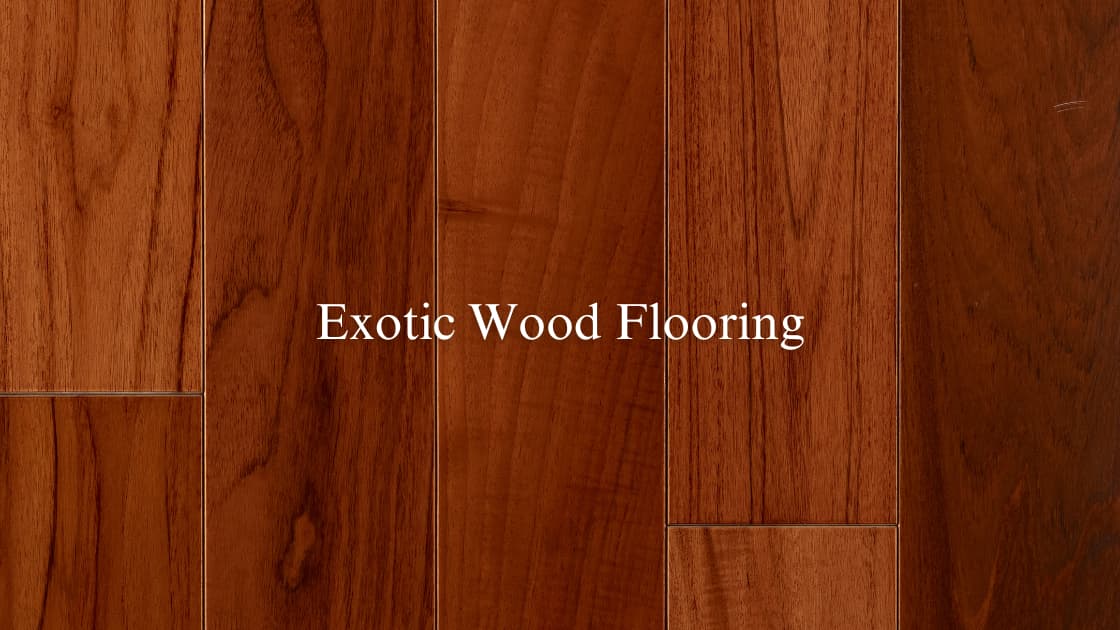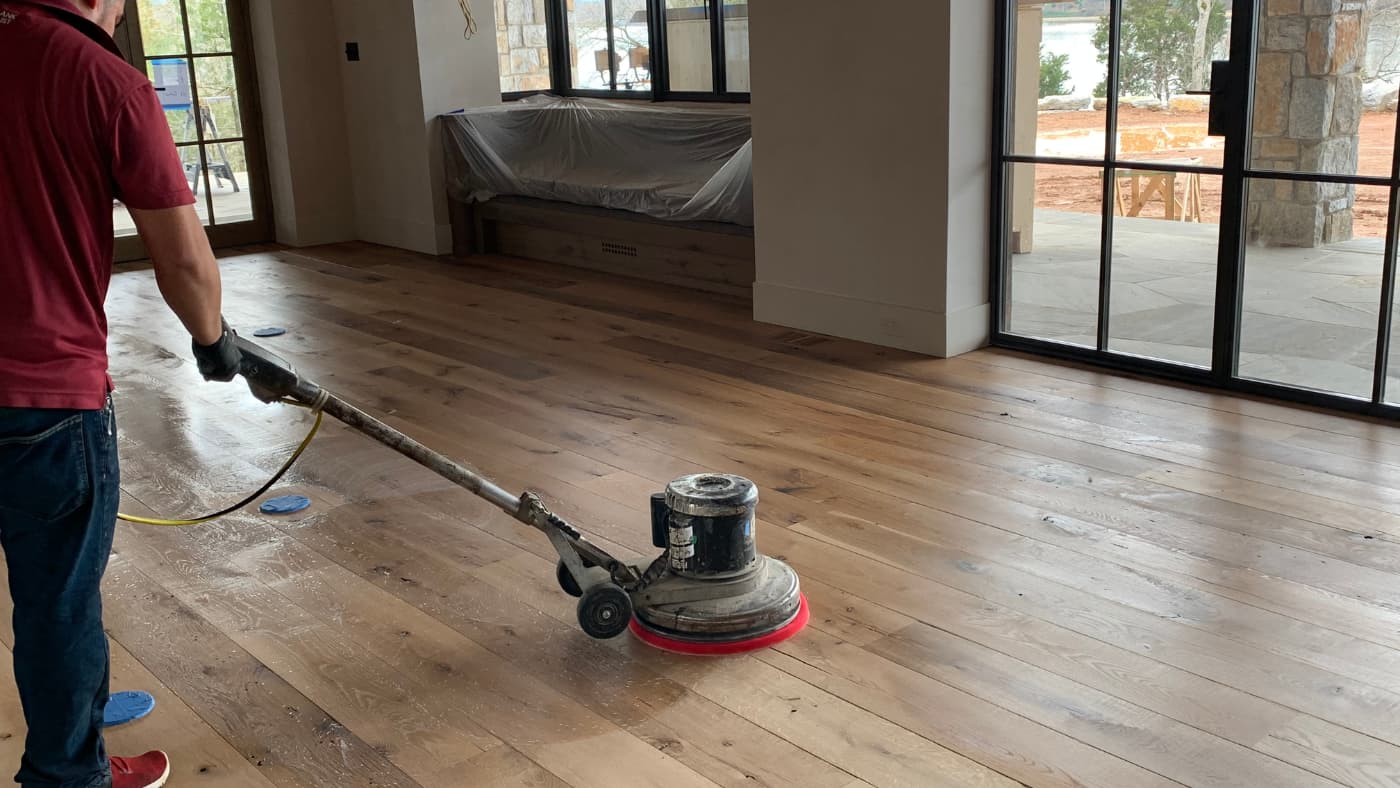A Brief History of Hardwood Flooring in America
Compared to other countries in the world, America is relatively young. So it is obvious that we do not own the market in the hardwood flooring industry. In fact, some might say that the French popularized hardwood flooring in the early 1600s, specifically King Louis XIII, during the construction of the Palace of Versailles. The Palace of Versailles is well known for the breathtaking parquet design in one of its main halls.
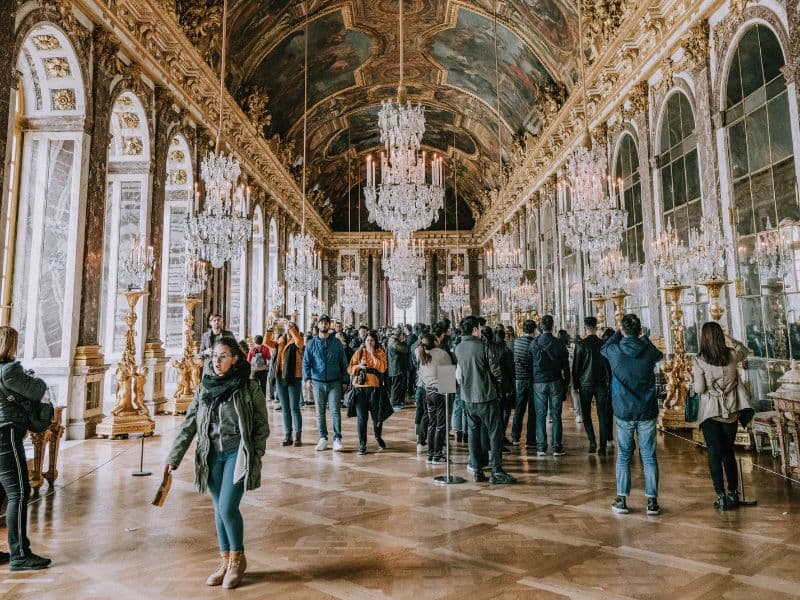

We did a recent project inspired by this pattern, creating what we call “Versailles panels.”


Even with our modern equipment, creating such a floor was a time-consuming and painstaking process. Imagine how much more difficult installing this kind of floor would be without the help of machines! Then imagine how much the human labor would cost. This reason alone is why generally only the wealthy could afford hardwood flooring, at least hardwood floors the way we would think of them today.
Wood floors have come in many shapes and varieties since ancient times, evolving as new technology became available. This is evident in almost any society, but all the more in America.
Some of the earliest European settlers in America would not have had the means to bring over building materials or equipment. Most would have had to use whatever resources the land they settled provided to them. One of the primary resources was timber.
Cleaning forested land so they could have farms and gardens resulted in a surplus of downed trees. Rather than wasting this valuable resource, many used it to build their homes. This resulted in what we know today as the log cabin. You can see some well-kept log cabins and other homesteads that were made this way in the Great Smoky Mountains National Park.
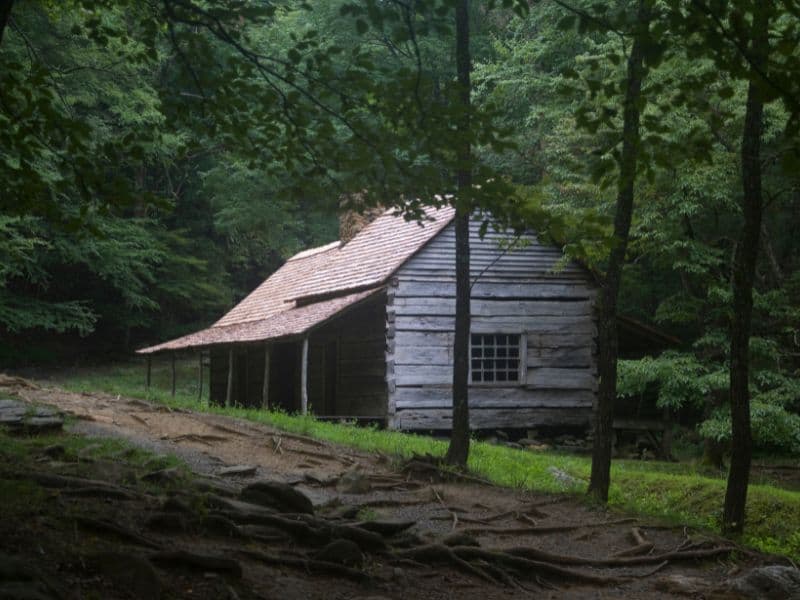

Most of these log cabins had floors of beaten earth, which was the cheapest and least labor-intensive floor. Of course, you can imagine with a dirt floor that there were issues with insects, snakes, and other vermin. You can also imagine the difficulties when it rained, and you had to slosh through the mud inside your own home. To avoid this, some settlers made floors out of puncheon logs. These were logs split lengthwise and laid together with the flat sides up. Take a look at this video to learn more about puncheon log construction:
While this would undoubtedly be an upgrade from a bare dirt floor, puncheon log floors were still very different from the polished hardwood flooring we have come to know today. Because planks were hand-hewn, they had a rougher appearance and were often different sizes and widths. This resulted in gaps between the boards and an overall uneven surface to walk on.
Over time, flooring in log cabins and other homes in America became more sophisticated, with the edges of planks being cut so that they overlapped the planks beside them. This covered the gaps and allowed for more expansion/contraction, but the floors were still relatively uneven.
By the time of the late 19th century, the industrial revolution had, indeed, revolutionized the hardwood flooring industry in America. What had to be previously cut by hand could now be cut, planed, and shaped by a machine. This made the turnaround time much faster as well as made plank flooring more readily available to the average consumer. This was also the time that tongue-and-groove flooring gained in popularity. Basically, we can thank the industrial revolution for producing the polished type of hardwood flooring we are familiar with today.
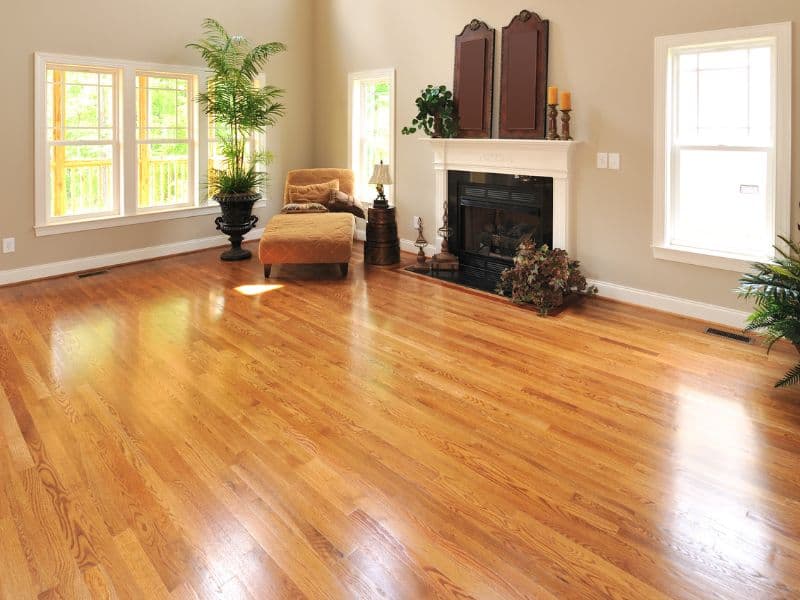

Of course, the industrial revolution was not the end of the story. Modern advancements in technology have made production and installation much more efficient. Modern finishes have also increased the durability of hardwood flooring.
Which, speaking of finishes…
Before the use of polyurethane, many Americans would paint their floors much like you would paint a wooden wall. Doing this helped protect the floor, sealing it from moisture, and it also allowed the homeowners to freshen up the look of their rooms. Tired of looking at the same old room? Just paint the floor a different color, or maybe even paint a pattern or picture. Others used varnish and stains to protect and change the look of their floor.
Today there are many options, but the most frequently used are polyurethane and natural oil finish. Each type has its benefits, but we are huge proponents of natural oil finishes. You can read more about that in our blog post “European Oil / Natural Oil Wood Finish.”
So as you can see, hardwood flooring in America has had a few changes over the centuries. However, it remains a classic, timeless, and durable choice for many. We wonder what the next few centuries will hold for the hardwood flooring industry…


